Coronavirus: What’s happening in Canada and around the world on Monday
The latest:
- Canada Recovery Benefit begins for Canadians who missed work due to pandemic.
- Officials urge caution over Thanksgiving weekend.
- Cases show steady growth in most provinces.
- Montreal looks to provide temporary housing in hotels as pandemic worsens.
- New Brunswick updates outdoor mask guidelines for 2 hot spot regions.
- France considers stricter lockdown measures including in Paris, Lyon.
- Businesses in England face new restrictions.
- China to test all 9 million people in one eastern city.
- EU to enact colour-coded COVID-19 map to ease co-ordination within bloc.
- Germany’s health minister says he expects vaccine rollout in first quarter of 2021.
- WHO denounces concept of ‘herd immunity,’ says it’s unethical to pursue as a health strategy.
Canadians who have missed work because of COVID-19 can start applying for new financial support from the federal government on Monday.
The new benefit comes into effect as concerns rise about increasing job losses with Ontario and Quebec imposing targeted restrictions on restaurants, bars and fitness centres to slow the spread of COVID-19 caused by the coronavirus.
Applications for the new Canada Recovery Benefit, which will pay $500 per week for up to 26 weeks, can be made through the Canada Revenue Agency.
Applications also opened last week for a new caregiver benefit, after numerous calls since the start of the pandemic for added support for parents and others who are forced to miss work to care for a dependent due to COVID-19.
Women have seen a disproportionate impact on their careers and earnings because of the pandemic because they have largely shouldered the burden of child care and home schooling.
The caregiver benefit applies to people who miss work because of school or daycare closures, and whose children who miss school or daycare because they have contracted the virus or may have been exposed.

It also applies to people forced to miss work to care for family members who need specialized care that is unavailable to them due to COVID-19.
The federal government anticipates 700,000 Canadians will apply for the caregiver benefit.
The government has also created a new sick-leave benefit that pays up to $1,000 over two weeks to people who can’t work because they contracted COVID-19 or must self-isolate because of the virus.
The multibillion-dollar suite of new benefits are taking effect following an acrimonious political battle in Parliament that ultimately saw all parties vote in favour of them but not before the airing of widespread concern that the Liberal government was rushing them through.
WATCH | What should Canadians be worried about with rising COVID-19 cases?
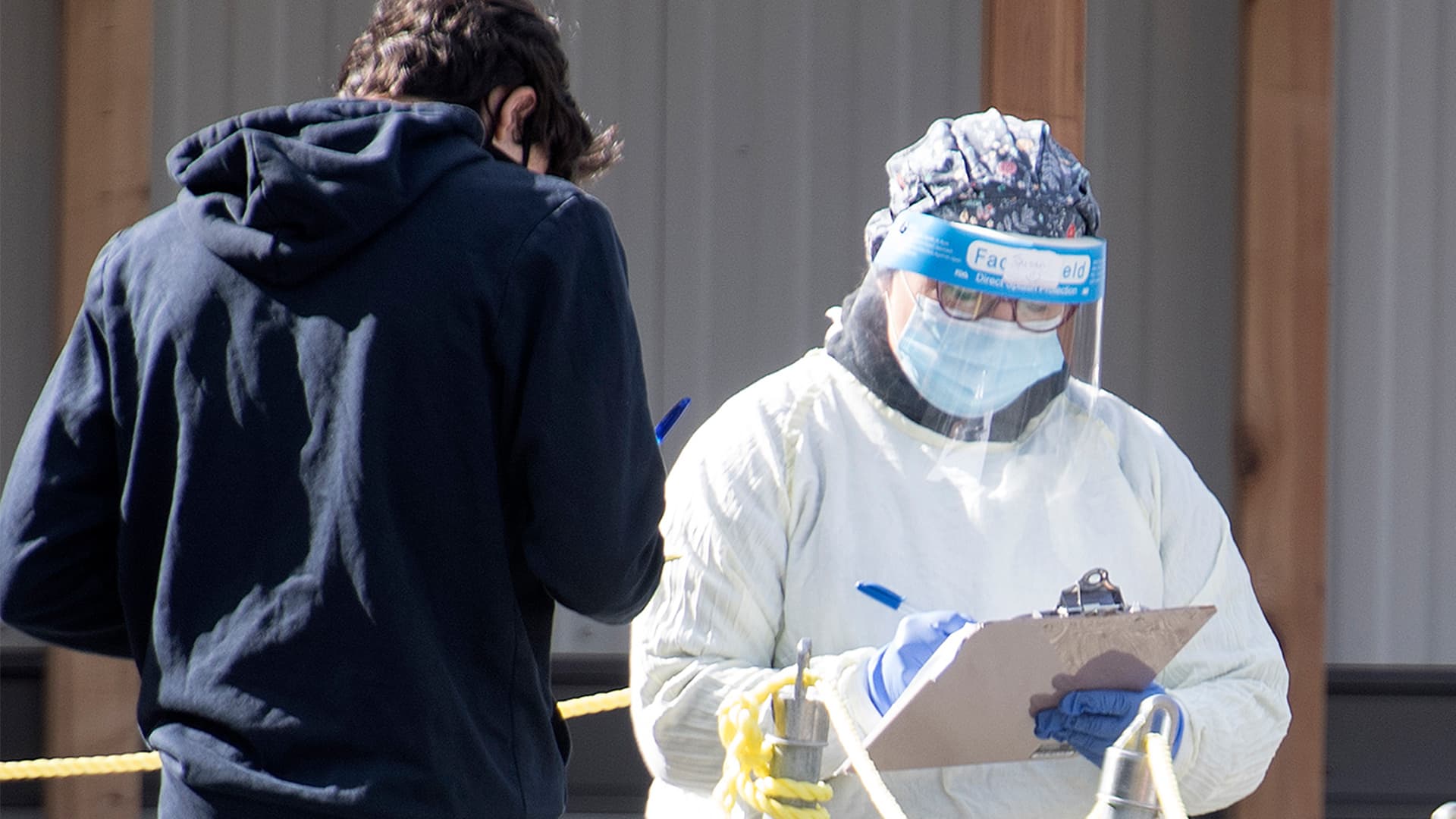
Infectious disease specialist Dr. Isaac Bogoch discusses what he’s worried about with Canada’s recent increase in COVID-19 cases and what is being done right. 1:32
As the second wave of the COVID-19 pandemic washes over the country, Canadians from coast to coast are being asked to limit the size of their Thanksgiving gatherings or keep them entirely virtual.
Canada’s chief public health officer said last week’s troubling surge in infections means that some guests may be missing from the Thanksgiving table.
But Dr. Theresa Tam said the best way for Canadians to show their gratitude this long holiday weekend is to keep each other safe by staying away from anyone outside their immediate circle.
WATCH | Your COVID-19-related Thanksgiving questions answered:
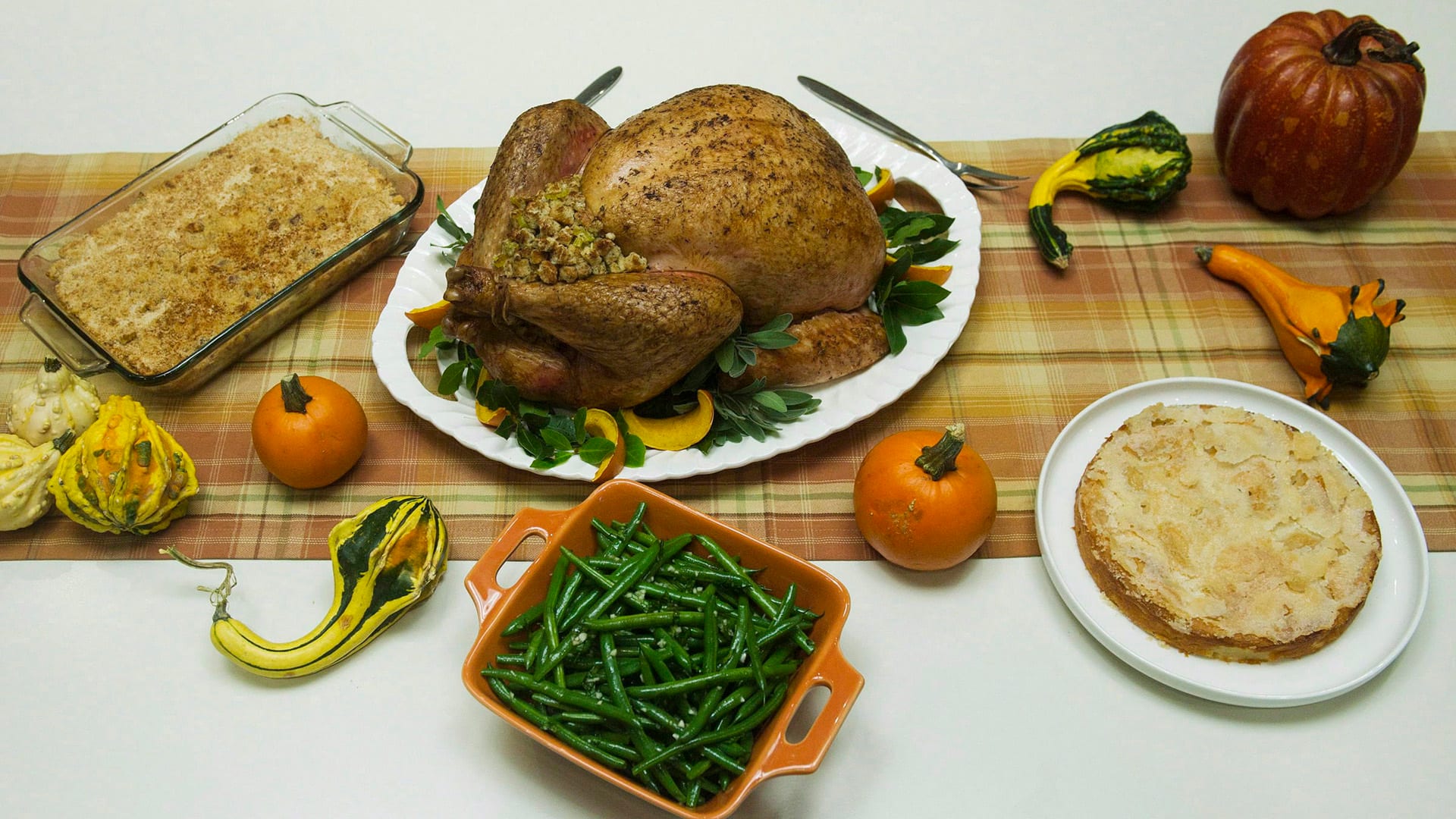
Infectious diseases expert Dr. Isaac Bogoch answers your questions about celebrating Thanksgiving during a pandemic. 5:45
“What is usually a special tradition for many Canadians will serve as a hard reminder of how much we are sacrificing to protect ourselves, those we love and our communities,” Tam said in a statement Sunday.
“As difficult as it may be, we need to continue on the right path and recommit, for ourselves and our loved ones, to follow the public health practices that helped us flatten the curve in the spring.”
WATCH | Celebrating Thanksgiving amid new COVID-19 restrictions:
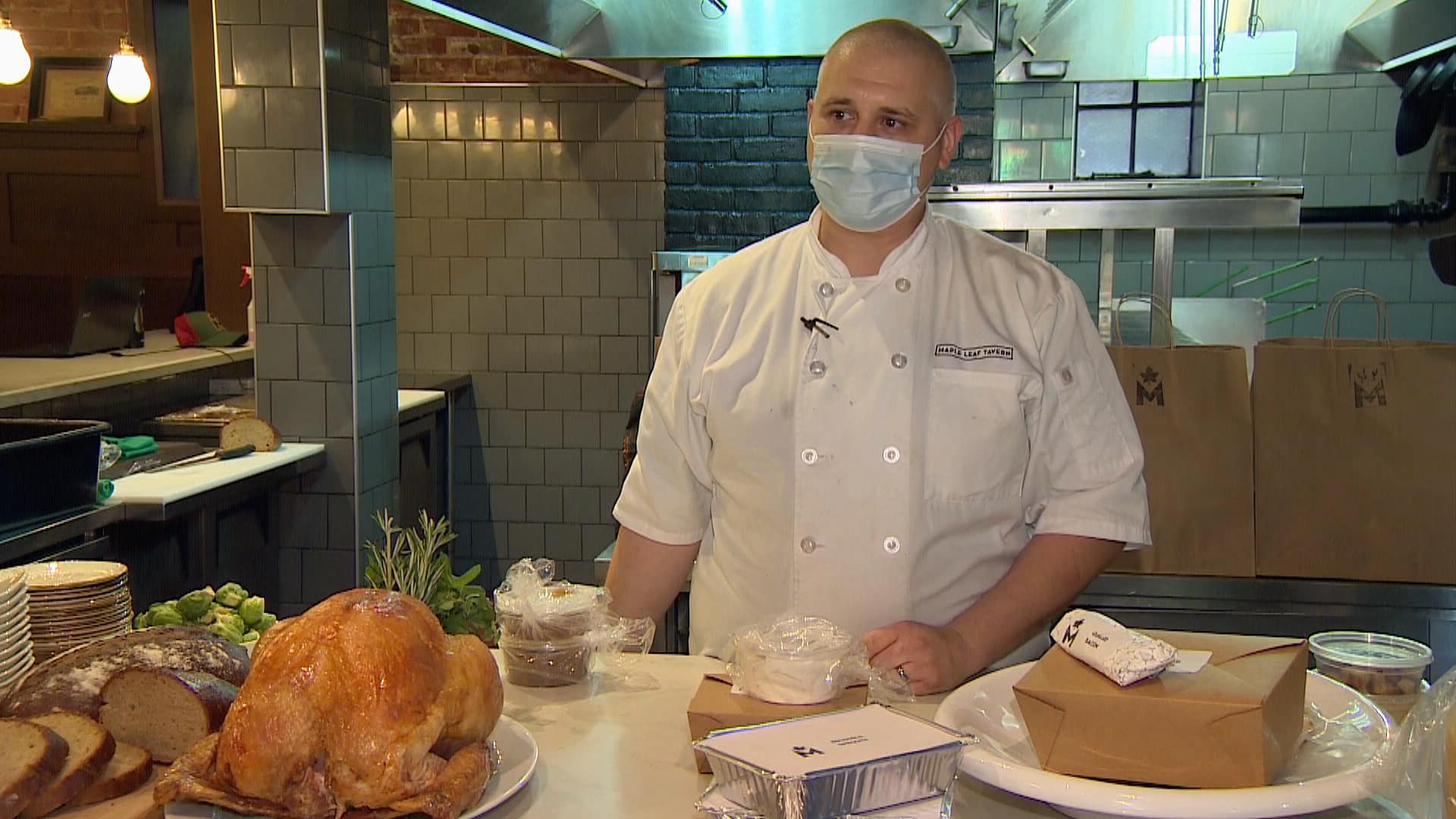
Torontonians had to figure out how to celebrate Thanksgiving with a new batch of COVID-19 restrictions, while many restaurant owners fear the second shutdown could finish them off now that indoor dining is off the table for a month. 2:03
What’s happening across Canada
As of 1:30 p.m. ET on Monday, Canada had 182,791 confirmed or presumptive coronavirus cases. Provinces and territories listed 154,246 of those as recovered or resolved. A CBC News tally of deaths based on provincial reports, regional health information and CBC’s reporting stood at 9,627.
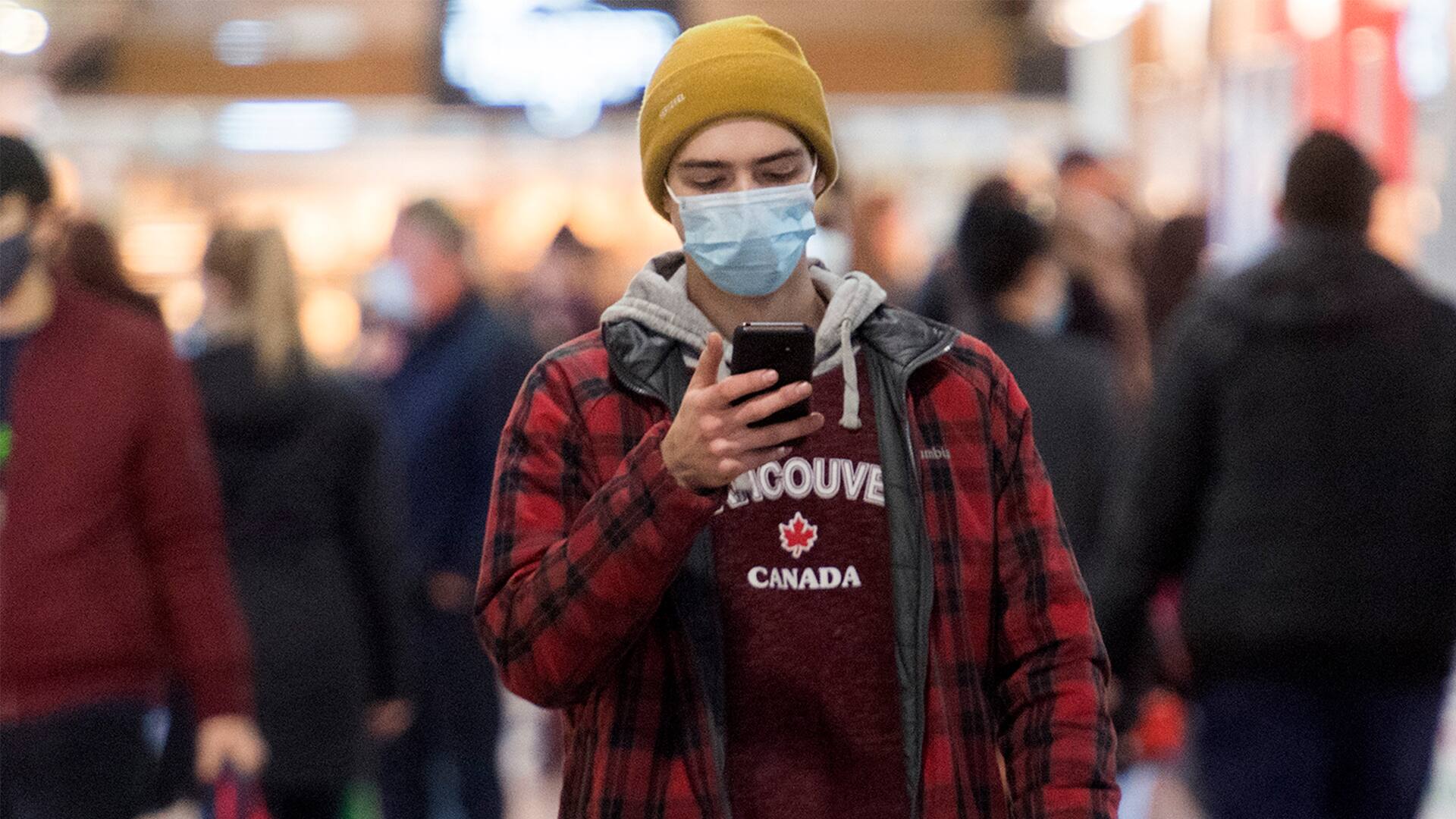
Doctors address the different ways the provinces and territories are managing an uptick in COVID-19 cases and what the regions can learn from one another. 4:27
In the so-called Atlantic bubble, New Brunswick was the only COVID-19 hot spot this weekend. The province is dealing with two outbreaks, one in the Moncton area and the other in Campbellton.
New Brunswick reported six new cases of COVID-19 on Monday, linked to the Moncton and Campbellton regions.
There are now 76 active coronavirus cases in the province. Five people are in the hospital, one of whom is in intensive care.
On Monday, the province clarified when and where people in the Moncton and Campbellton communities will need to wear face masks if they are outdoors.
That new provision was initially announced on Friday as New Brunswick moved both of those areas back to the “orange” recovery phase that imposes limits on gathering sizes and which businesses can remain open.
An updated version of New Brunswick’s emergency declaration order issued on Monday outlines that masks are mandatory outside in those regions when people gather on the street, in parks and on walking trails. Private gatherings in backyards of single-family homes do not require masks.
Newfoundland and Labrador has nine active cases but had no new cases on Sunday. The province reported one new case of COVID-19 on Monday and it’s travel related.
Prince Edward Island‘s chief public health officer announced two new cases of COVID-19 on Sunday and three active cases overall.
Nova Scotia had no new cases Monday and four active cases, including one in the ICU. The most recent cases were announce Saturday and were related to travel outside of Canada, health officials said.
A spokesperson with Nova Scotia Public Health confirmed that those cases are related to a possible exposure to COVID-19 on a flight from Toronto to Halifax last week.
In Quebec, the province reported 843 new cases on Monday and four new deaths. There are 457 people in hospital, including 75 in ICUs.
Now, most residents in southern Quebec live in a red zone meaning they are under stricter health measures.
A Montreal high school will close for two weeks after multiple members of the school community tested positive for COVID-19. Loyola High School announced one student tested positive on Oct. 9, the email said.
Since then, the school said it was told more members of the school community also tested positive, although it did not say how many.
WATCH | What does it mean to live in a ‘red zone’ in Quebec?:
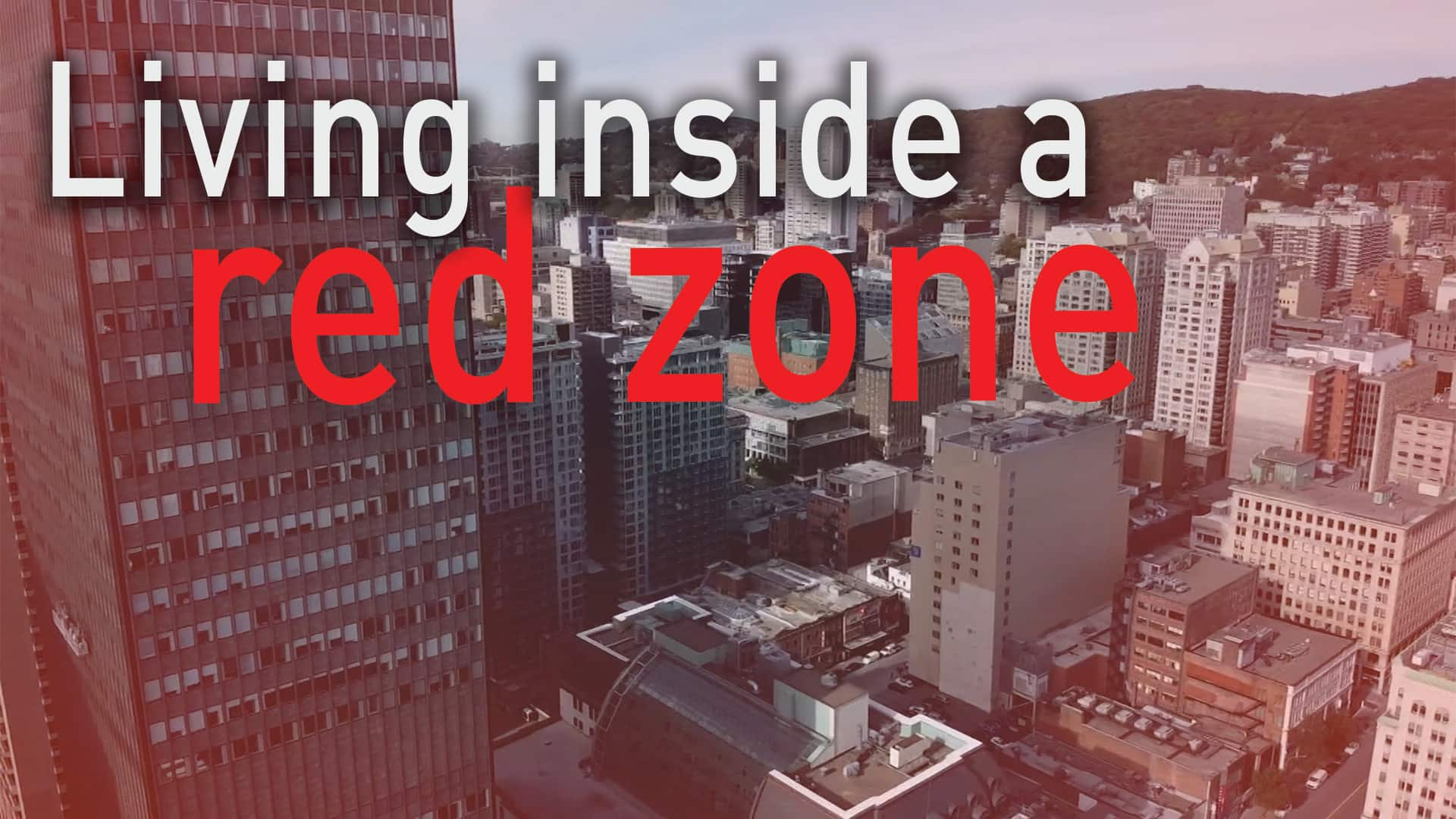
Most Quebecers are now living inside a red zone. But just what does that mean? 4:01
Montreal will also provide temporary housing in hotels as the pandemic has led to strain on the city’s homeless shelters.
Montreal Mayor Valérie Plante says she’s working with federal and provincial governments to temporarily house people who are homeless in mostly vacant hotels. Advocates say the main goals should be permanent housing, especially as temperatures drop and Quebec continues to see increased numbers of COVID-19 infections.
Ontario reported 649 new cases of COVID-19 on Sunday, with one more death and four new hospitalizations. There are 217 people in hospital with the virus. Fifty-one are in ICUs, and 32 of those are on ventilators. Ontario will not be releasing new numbers Monday because of the holiday.
On Sunday, an outbreak was declared at a residence on the Western University campus in London, Ont., by the region’s public health unit. Four students at London Hall have tested positive and they have been moved out of residence to quarantine, the school said in a statement.
Close contacts of the positive cases have also been placed into quarantine out of “an abundance of caution, the school said. London’s public health unit, the Middlesex London Health Unit, warned all university students not to travel to provincial hot spot locations like Ottawa and the GTA. But the notice may have come too late as the Thanksgiving weekend was already underway.
Manitoba reported 77 new cases of COVID-19 on Monday. The province also reported two new deaths — a man in his 40s and a woman who was older than 100. Both lived in Winnipeg.
WATCH | COVID-19 cases a concern in remote Manitoba First Nations:
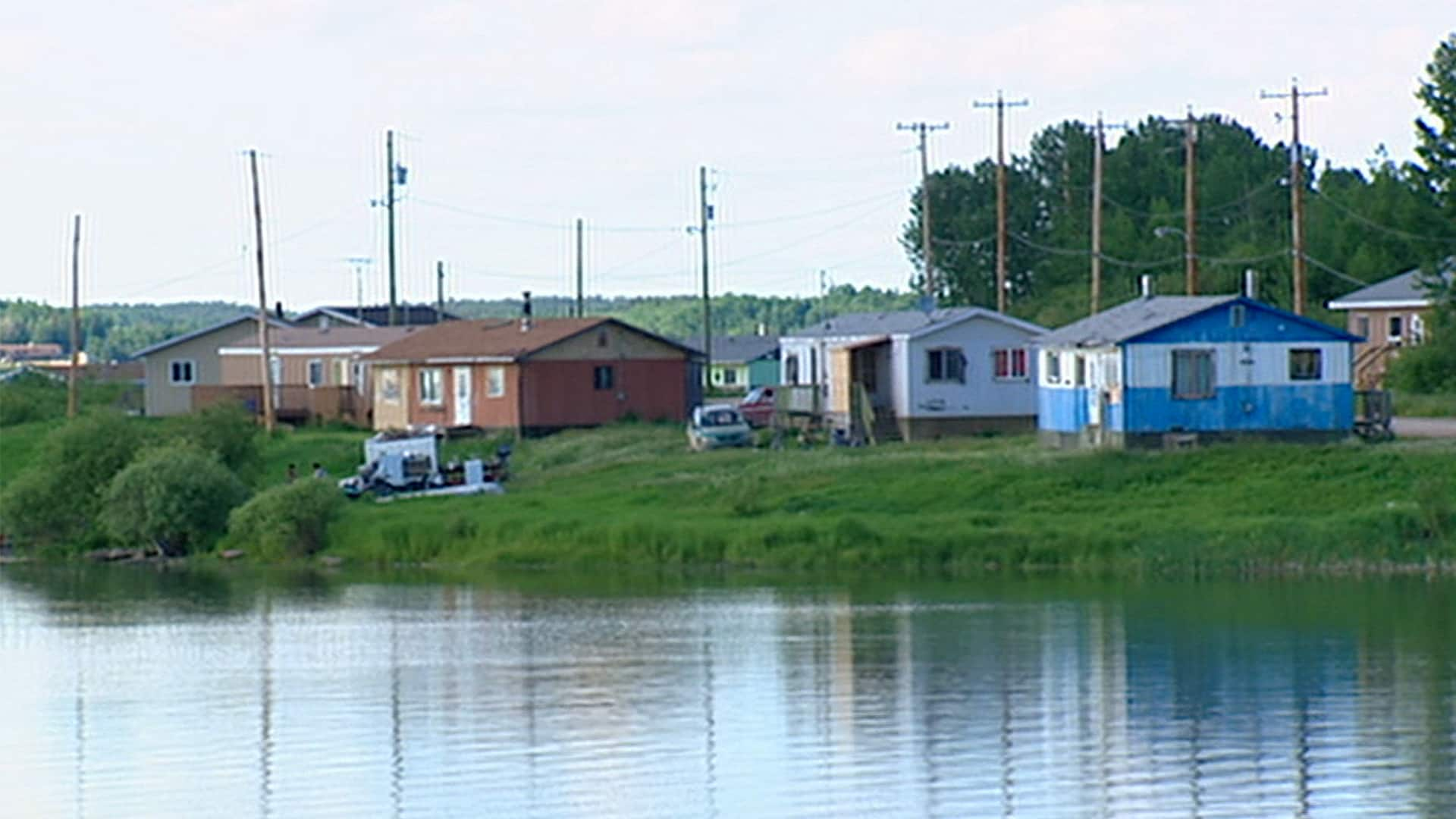
Manitoba has seen higher numbers of COVID-19 cases in recent weeks and though most of the cases are around Winnipeg, there is also concern about remote First Nations communities that lack critical resources. 1:54
Saskatchewan reported its largest single-day increase in new cases since late July on Monday, with 48 new infections.
Of the province’s 2,140 total reported cases, 215 are considered active. A total of 1,900 people have recovered. Twenty-five people have died.
The province said public health investigations have linked 12 of Sunday’s new cases to the Gospel Outreach outbreak in Prince Albert, and the majority of the new Regina cases appear to be from the same apartment complex.
Alberta reported 277 new cases on Friday and one new death. That brings the province to a total of 2,225 active cases, up 128 from the previous day. At the peak in late April, there were nearly 3,000 active cases in the province.
British Columbia reported 119 new cases Friday. There were 1,406 active cases of COVID-19 in the province.
WATCH | 2 remote towns along Alaska-B.C. border fight for their own bubble:
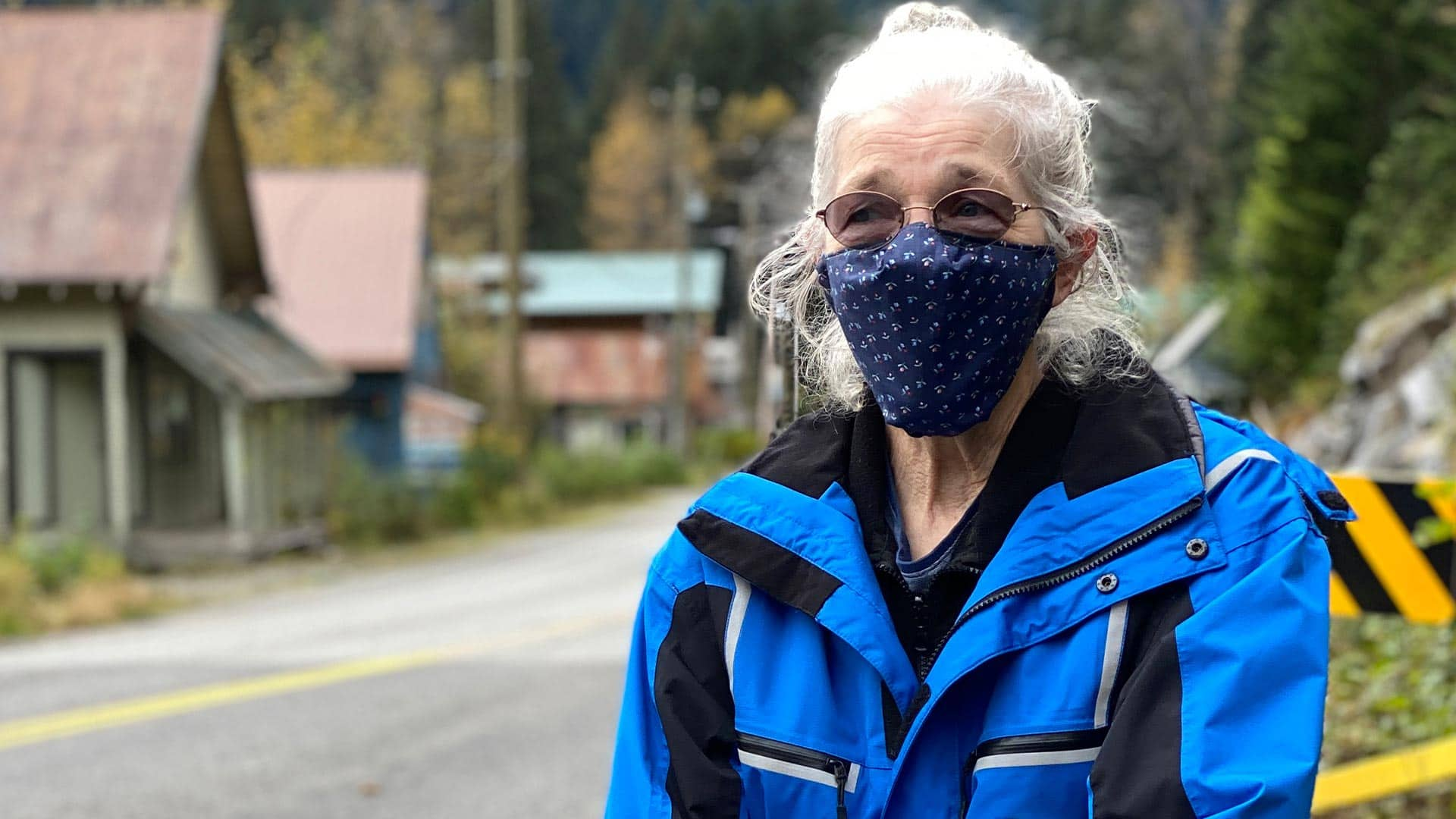
Two picturesque towns intricately linked along the Canada-U.S. border are fighting for the right to become their own travel bubble. 4:45
In the territories, Yukon has a new probable case of COVID-19, the territory’s chief medical officer of health announced on Saturday.
WATCH | Many school meal programs have shut down due to the pandemic:
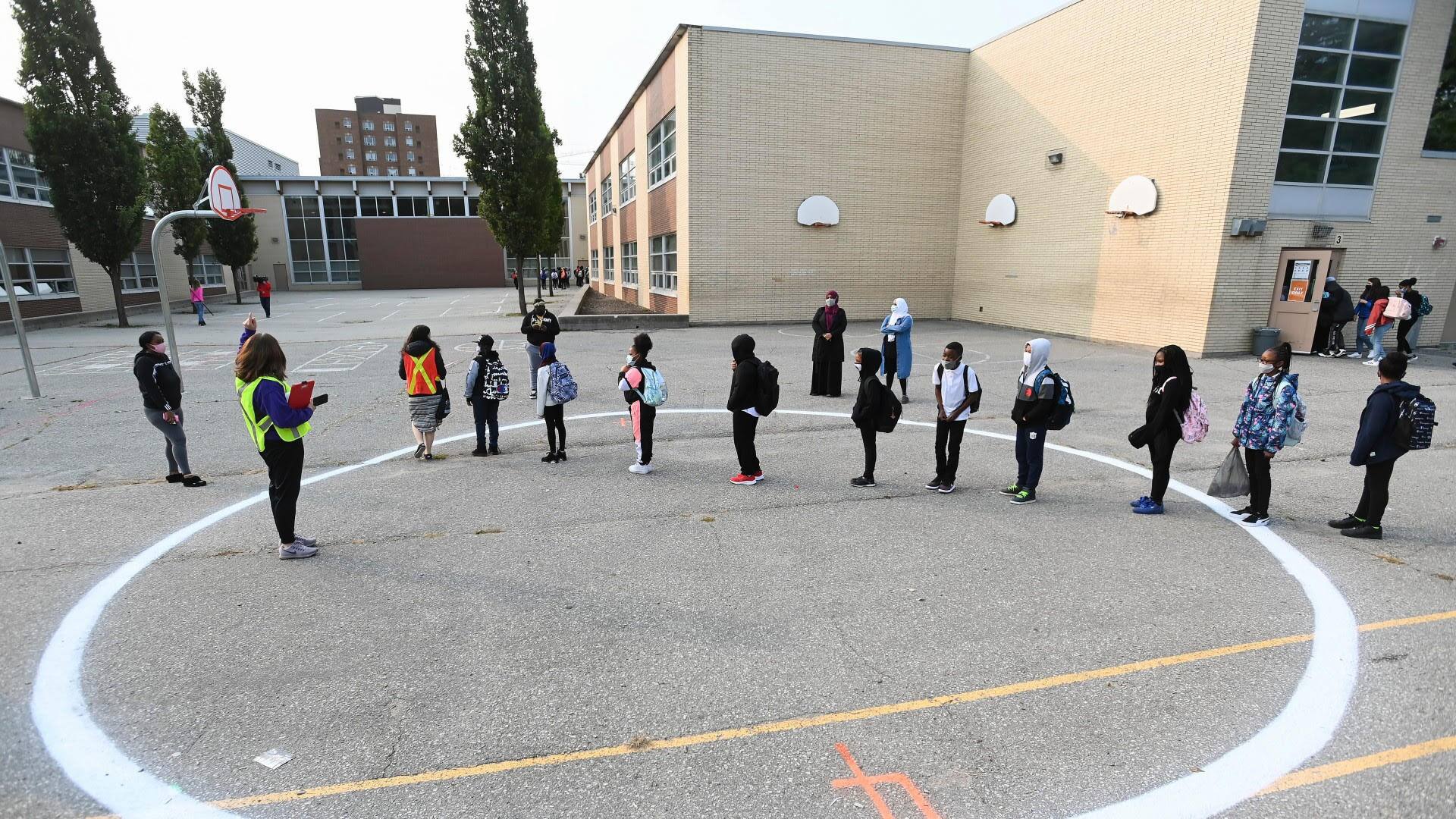
The coronavirus pandemic has forced many school meal programs across Canada to shut down, resulting in more than two million kids going to school on an empty stomach, according to the Breakfast Club of Canada. 2:14
What’s happening around the world
According to Johns Hopkins University in Baltimore, the global total of confirmed coronavirus cases stands at more than 37.5 million. More than one million people have died, while more than 26.1 million have recovered.
The World Health Organization on Monday warned that the concept of “herd immunity” is not a realistic strategy and proposals to pursue it are “unethical.”
WHO director-general Tedros Adhanom Ghebreyesus said at a press briefing that health officials typically aim to achieve herd immunity — where the entire population is protected from a virus when the majority are immune — by vaccination.
However, a large number of people would have to be vaccinated. He gave the example of measles, where about 95 per cent of the population must be vaccinated for herd immunity to be a possibility.
“Herd immunity is achieved by protecting people from a virus, not by exposing them to it,” he said.
“Never in the history of public health has herd immunity been used as a strategy for responding to an outbreak,” he said, calling the strategy “scientifically and ethically problematic.”
The WHO estimates around 10 per cent of the world’s population has immunity to COVID-19, which means the vast majority risk being infected by the disease.
European Union countries are getting ready to adopt a common “traffic light” system to co-ordinate travel across the 27-nation bloc amid the coronavirus pandemic.
To ensure that member states do not close their borders to one another and avoid a repeat of the cacophony witnessed in March when the virus first struck, the EU commission came up with proposals that have been amended before their scheduled approval by EU nations on Tuesday.
The key measure is a common map of infections drawn up by the European Centre for Disease Prevention and Control. It will sort European regions into green, orange and red zones according to the severity of coronavirus outbreaks.
Under the latest proposal, red zones should be areas where the total number of newly notified COVID-19 cases is more than 50 per 100,000 people during a 14-day period and the percentage of positive tests reaches at least four per cent.
Regions with a lower positive rate but where the total number of cases is more than 150 per 100,000 will also be classified red.
In light of the very high level of infections across the continent now, most of the bloc should be classified as red or orange.

British Prime Minister Boris Johnson on Monday imposed a tiered system of further restrictions on parts of England, as the COVID-19 outbreak accelerates, though anger is rising at the cost of the curtailment of freedoms.
Johnson’s three-tiered system, announced in Parliament, is an attempt to standardize a patchwork of often complicated and confusing restrictions imposed across England.
The lockdowns will include shutting pubs and bars in areas placed into the “very high” alert level. Currently, only Liverpool has been placed in that zone as it’s the epicentre of the virus in the country.
The U.K. has experienced Europe’s deadliest outbreak, with an official death toll of 42,875. Health officials say Britain is at a tipping point in the outbreak, with strong action needed to prevent hospitals from being overwhelmed.
Four Swiss Guards have tested positive for coronavirus and were showing symptoms, the Vatican said Monday, as the surge in infections in surrounding Italy penetrates the Vatican walls.
The Swiss Guards, the world’s oldest standing army, provide ceremonial guard duty during papal Masses, man the Vatican gates and help protect the 83-year-old Pope Francis.
The four are in isolation while their contacts are being traced, the Vatican said Monday. They join three other Vatican residents who tested positive in recent weeks plus the dozen or so Holy See officials who tested positive during the first wave of the outbreak.
Despite the positive cases among his own guards, Francis on Monday was seen once again without a mask. He warmly greeted Cardinal George Pell in his private studio, and neither man wore a mask. Also unmasked were Pell’s secretary and the Vatican photographer.
WATCH | Trump claims COVID-19 immunity, falls behind in polls:

U.S. President Donald Trump has claimed he now has immunity to COVID-19 before he heads for a series of swing-state rallies as polls put him behind Joe Biden with just over three weeks before election day. 2:03
Scientific advisers to Italy‘s government have modified Italy’s coronavirus quarantine rules, reducing to 10 days the 14-day minimum quarantine for people who test positive or have come into contact with someone who tested positive.
The shift, which follows reductions taken by other European countries, was an acknowledgement of the impracticability of asking tens of thousands of people to remain isolated for two weeks as a precaution, even as infections are rising sharply. In addition, in a bid to reduce pressure on Italy’s overwhelmed laboratories, the advisers also decided that only one negative test is required to get out of quarantine, rather than two.
The scientific committee issued revised guidelines late Sunday as Italy is seeing a surge in new infections, averaging more than 5,000 a day.

China‘s government says all nine million people in the eastern city of Qingdao will be tested for the coronavirus this week after nine cases linked to a hospital were found.
The announcement Monday broke a string of weeks without any locally transmitted infections reported in China.
The National Health Commission said authorities were investigating the source of the infections found in eight patients at Qingdao’s Municipal Chest Hospital and one family member. The commission said the whole city will be tested within five days.
The last reported virus transmissions within China were four patients found on Aug. 15 in the northwestern city of Urumqi in the far western Xinjiang region. All the cases reported since then were in travellers from outside the mainland.

India has reported 66,732 new coronavirus cases, driving the country’s overall tally to more than 7.1 million.
The Health Ministry on Monday also reported 816 deaths in the past 24 hours, taking total fatalities to 109,150.
India is second in the world in number of infections, behind only the United States, which has reported more than 7.7 million cases.

In France, Prime Minister Jean Castex refused to rule out more lockdowns after health authorities reported another 43,000 cases of COVID-19 over the weekend.
The country currently has nine cities under the maximum virus alert level including Paris, Marseille and Lyon. Officials have warned France is likely experiencing a “second wave” of coronavirus and hospitals are becoming crowded.
France’s maximum alert level takes effect when a region’s infection rate exceeds 250 cases per 100,000 people and at least 30 per cent of its intensive care beds are reserved for COVID-19 patients.
To avoid a national lockdown, Castex told residents on broadcaster France Info that home gatherings need to be limited.
In the U.S., officials in Nashville, Tenn., are investigating a worship event that occurred outside of a courthouse on Sunday featuring a large crowd where most were not wearing masks or social distancing.
The Nashville Health Department says that the organizer will face penalties and that they didn’t apply for a permit application to hold the gathering.
Tennessee has been reporting an increased number of new COVID-19 cases in recent weeks. Event leader Sean Feucht posted videos of the gathering on social media, calling it a protest against coronavirus health restrictions. Feucht has been linked with multiple similar gatherings in other states like California.
The event happened the day before a mayor of a city in Tennessee died of COVID-19. Lonnie Normam, the mayor of Manchester, died early on Monday after being hospitalized for 11 days, the city said on Facebook.
WATCH | Residents in Arizona react to Trump’s COVID-19 diagnosis:
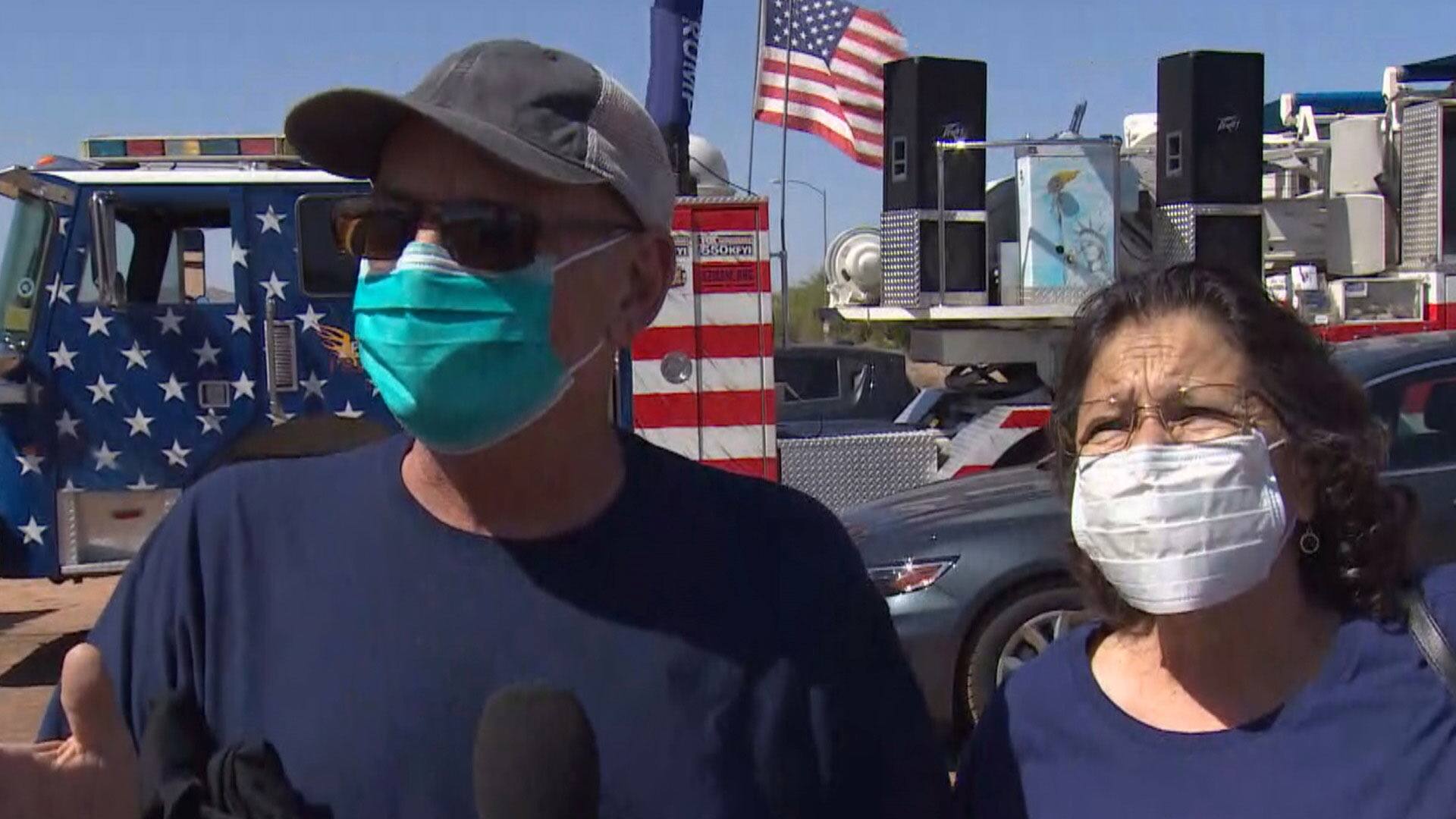
Arizona voters react to news Donald Trump has tested positive for the coronavirus weeks before the U.S. presidential election. 2:33
Italy’s number of new COVID-19 cases fell below 5,000 on Monday. However, this daily decrease could be a result of reduced testing.
The country has been hovering around 5,000 new cases a day, prompting the government to consider more restrictions after making masks mandatory outdoors last week.
In Berlin, Germany’s health minister says he anticipates a vaccine for COVID-19 will be ready to be administered to citizens in the first quarter of 2021.
“As things stand today, Oct. 12, I assume that we’ll be able to begin in the first quarter of next year,” Jens Spahn said during a video conference with the Ifo Institute research think-tank.
Last month, Spahn and Research Minister Anja Karliczek said they hope to vaccinate Germans who are most at risk early next year. He said Monday that determination is on track.
Vaccinations would be voluntary and be first available for the elderly, those with pre-existing medical conditions and individuals who work in health-care settings and nursing homes.



